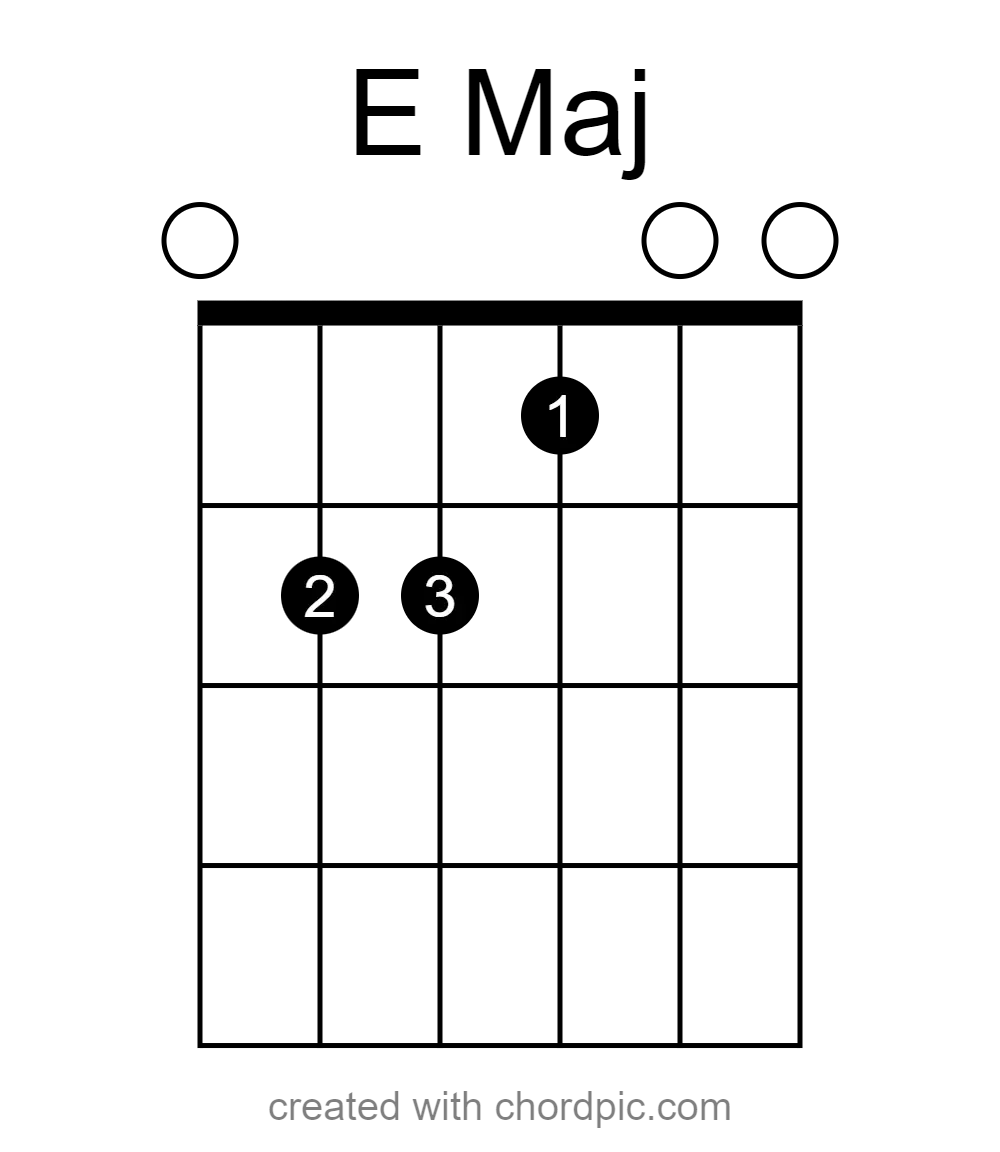Minor chords on the guitar are like hidden treasures, adding depth, emotion, and a touch of darkness to your musical repertoire.
Whether you’re a beginner eager to explore new sounds or an experienced player looking to expand your musical vocabulary, this blog post is your gateway to mastering the easiest minor chords on the guitar.
Get ready to delve into the brooding realm of minor chords, understand their significance, and discover fast & easy ways to get you rocking out ASAP!

Understanding Minor Chords
What Is A Minor Chord
A minor chord, like all other chords, are a fundamental element in music theory and composition. It consists of three different notes played simultaneously, creating a specific tonal quality.
Minor chords typically evoke a sense of sadness, melancholy, or introspection in music. They add depth, emotional complexity, and contrast to compositions across various genres.
They are an essential tool for expressing a range of emotions and creating harmonic tension and resolution when used to create chord progression.
The Minor Chord Formula
A minor guitar chord is constructed by combining the root note, a minor third interval, and a perfect fifth interval.
This formula is directly derived from the natural minor scale, which follows a specific pattern of whole and half steps (WHWWHWW).
To illustrate this with an example, let’s take the C minor chord. The root is C. Counting three half steps up from C, we land on E♭, which is the minor third. Counting seven half steps up from C, we arrive at G, which is the perfect fifth. When these three notes (C, E♭, and G) are played together, they form a C minor chord.
This formula of combining the root , a minor third, and a perfect fifth (minor triad) is consistent across all minor keys and allows us to construct minor chords in a systematic manner.
Related: More on guitar scale basics
The Easiest Open Position Minor Chords
Open position chords are fundamental building blocks to quickly get you into playing guitar. They are chords that incorporate open strings, which are played without any fretting. These chords are typically played near the headstock of the guitar, utilizing the first few frets.
The benefits of open position chords are many! Firstly, they are relatively easy to learn and execute, providing a solid foundation for developing finger strength, dexterity, and coordination.
Open position chords also allow beginners to strum and play their favorite songs quickly. They are commonly used in popular music, making it easier to find resources such as this one that are tailored to these chord shapes.
Additionally, open position chords serve as a gateway to understanding basic music theory and chord progressions, setting the stage for more advanced playing in the future.
By mastering a couple open position chords, you will gain confidence in your playing abilities, build a repertoire of songs, and develop a strong foundation for further guitar exploration.
Related: How to read chord charts
Open E minor

Open A minor
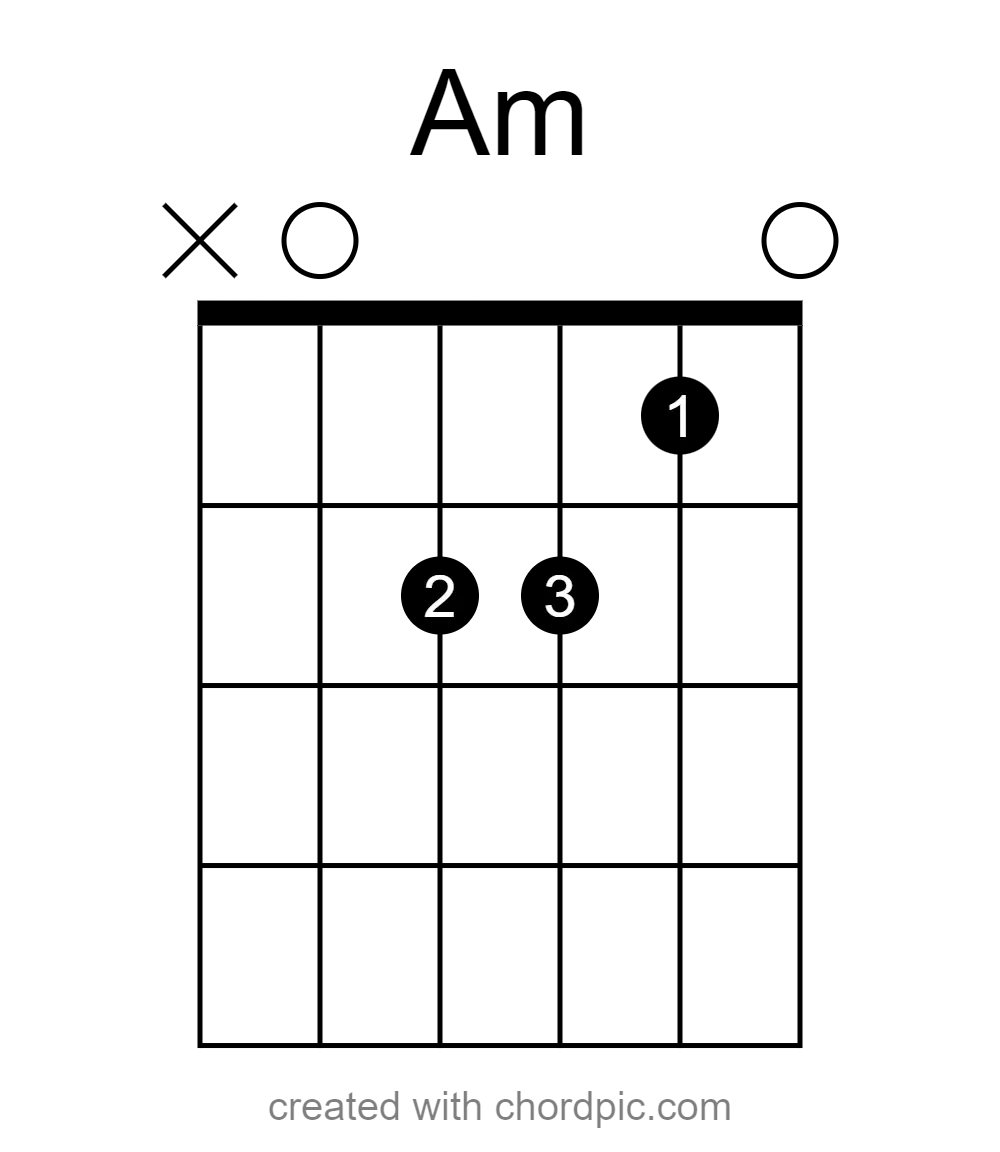
Open D minor
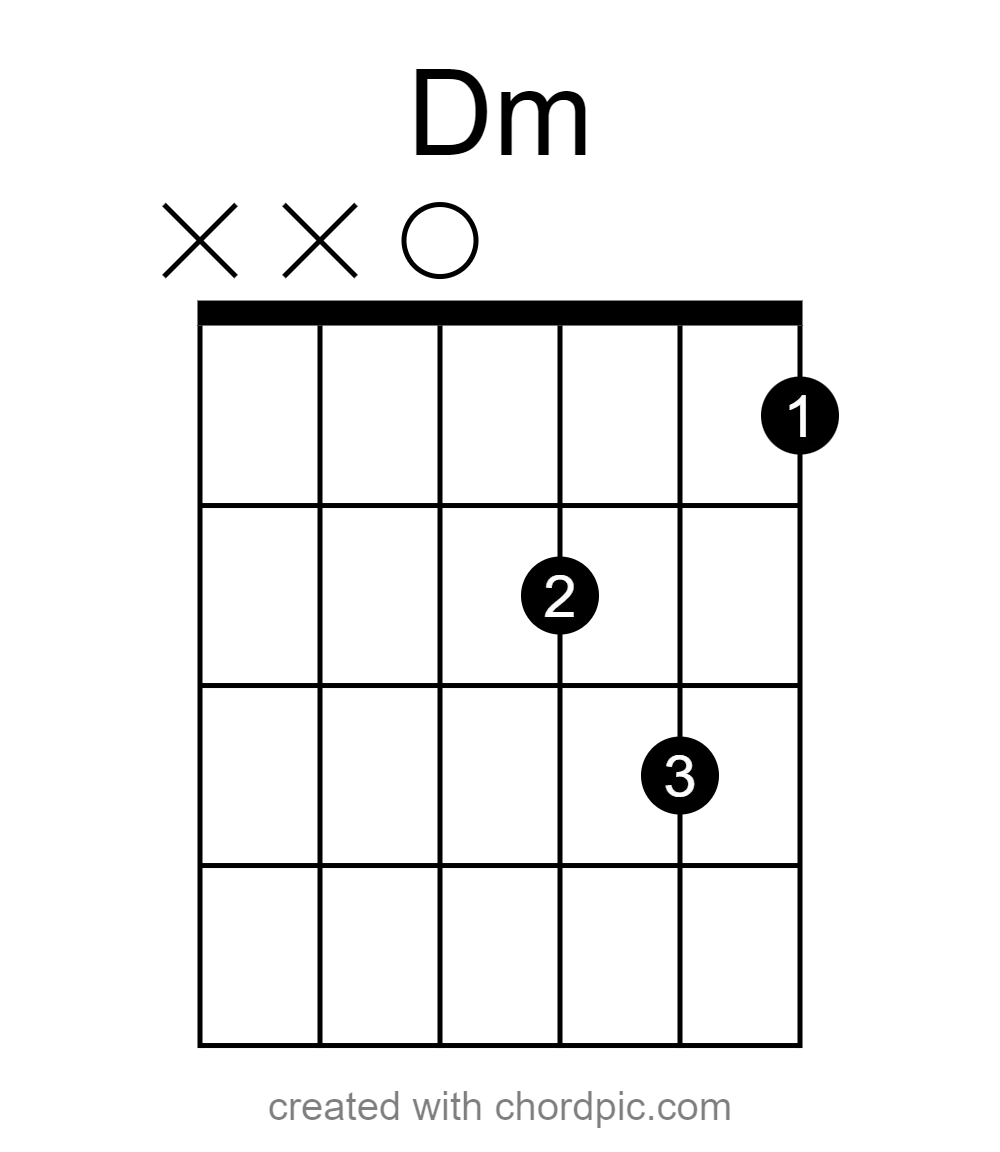
Movable Minor Chord Shapes
Movable chord shapes are an incredibly powerful tool in a guitarist’s arsenal. Unlike open position chords that are rooted to a specific fret, movable chord shapes can be moved up and down the guitar neck, allowing you to play chords in different keys without changing the overall shape.
The significance of learning movable chord shapes lies in their versatility and efficiency. By mastering a few key shapes, you gain the ability to play a wide range of chords without having to memorize numerous variations. This unlocks the potential to navigate the fretboard more freely, explore different musical possibilities, and easily transpose songs to different keys.
Movable chord shapes serve as a musical blueprint that can be applied across the entire neck, making them invaluable for improvisation, songwriting, and playing with other musicians. They provide a solid foundation for understanding the underlying chord theory and empower you to create unique chord voicings and progressions tailored to your musical style.
Learning movable chord shapes may require some initial effort, but the payoff is immense. It expands your chord vocabulary, boosts your playing confidence, and ultimately enables you to express yourself more fluently on the guitar.
Gm Inversion 1

Gm Inversion 2

Gm Root Position

Barred Minor Chords On The Guitar
A barre chord is a challenging chord played by using one finger to press down multiple strings across the fretboard, acting as a movable nut. It requires strength, coordination, and precision to avoid muting or buzzing of strings.
Proper finger positioning is crucial to maintain clear notes and prevent strain, making it a technique that demands practice and patience for mastery.
If you’re up for it, give these a go! You can also learn more about barre chord techniques in this article.
F minor Barre Chord
This is essentially the Em open chord, but shifted into the 1st fret.
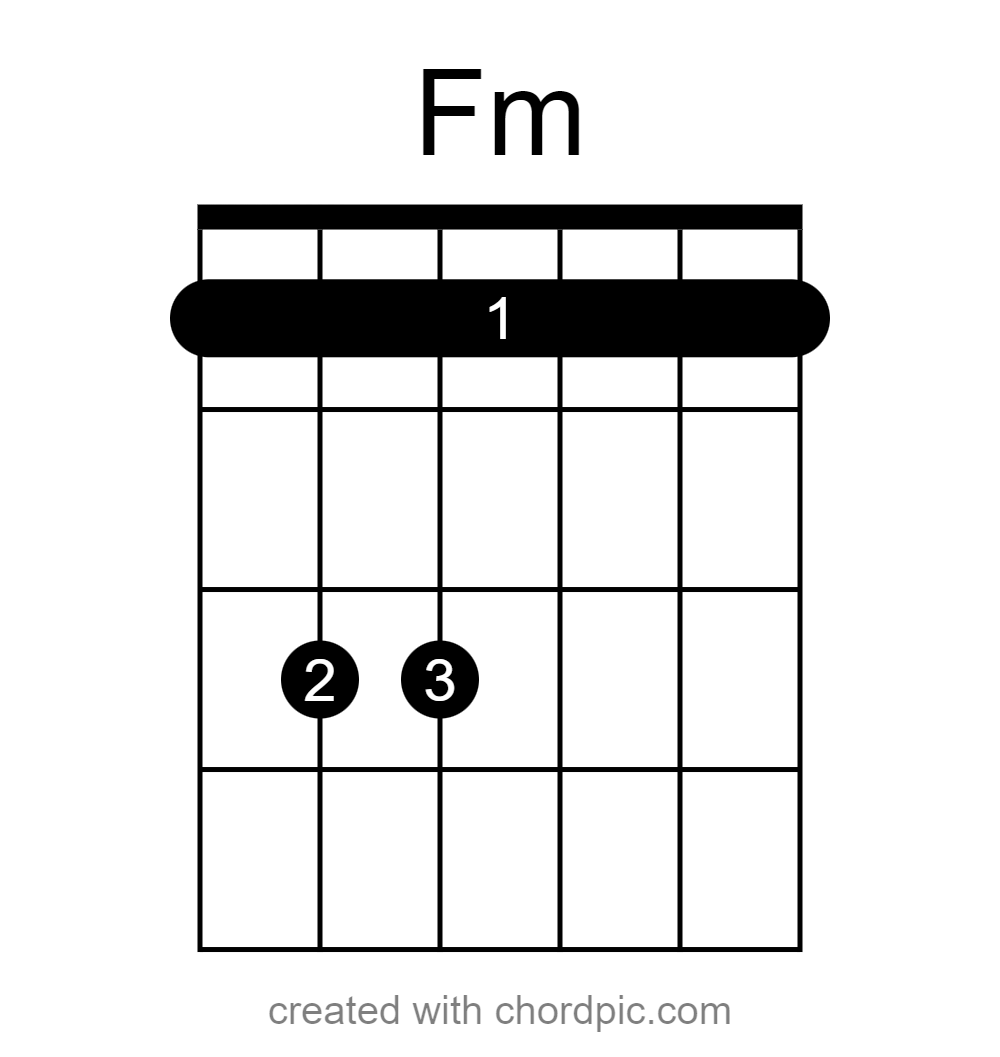
B minor Barre Chord
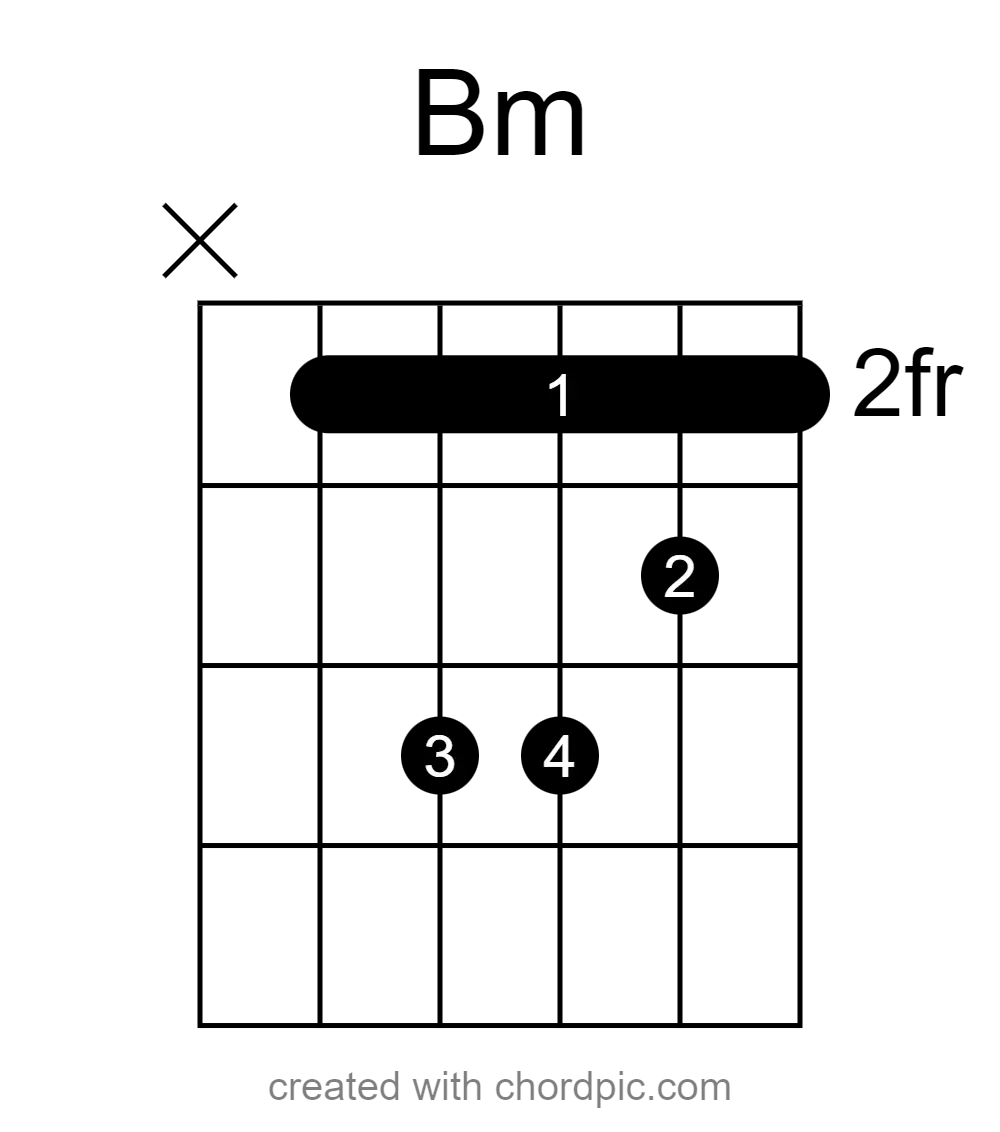
These 2 chord shapes are also considered movable. So if you learn them, you can shift them up & down the fretboard to unlock all sorts of chord progressions.
Minor vs Major Chords
The main difference between major and minor guitar chords lies in their tonal qualities and emotional expressions.
Major chords have a more uplifting, bright, and happy sound, while minor chords evoke a sense of melancholy, sadness, or introspection.
This difference is primarily achieved through the intervals used in their construction. Major chords typically consist of a root note, a major third, and a perfect fifth, whereas minor chords incorporate a root note, a minor third, and a perfect fifth.
These distinct characteristics allow major and minor chords to create contrasting moods and contribute to the overall emotional impact of a song or composition.
E Major Chord
Here’s an easy major triad to play so you can hear the contrast versus a minor chord of your choosing. To learn more about this chord & its major scale, check out our article on the E major scale.
